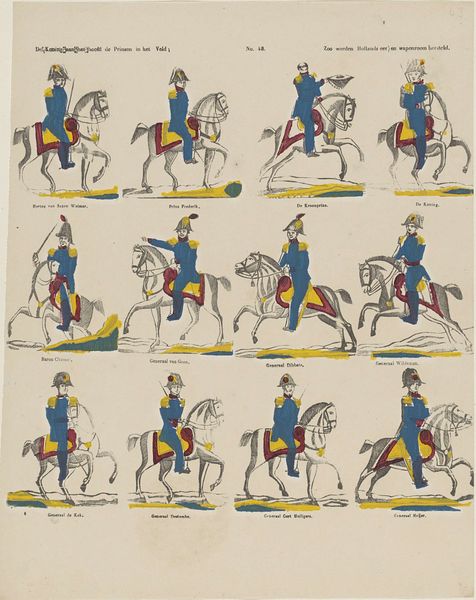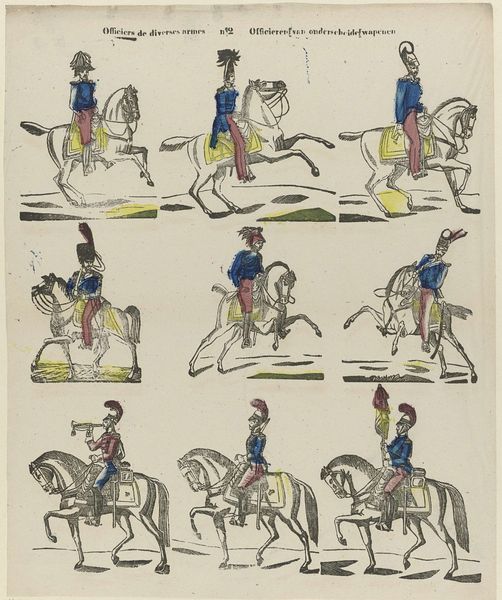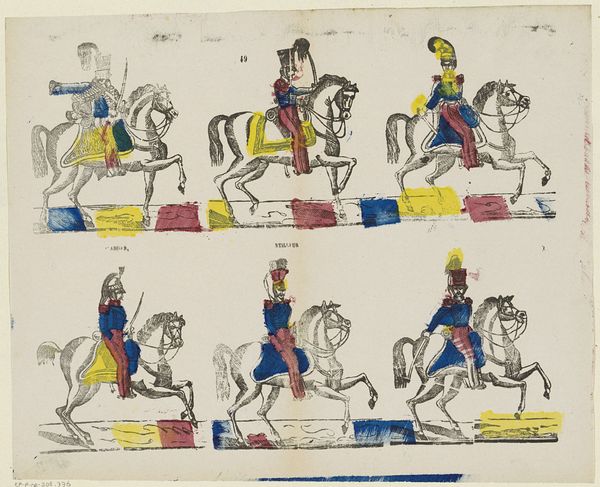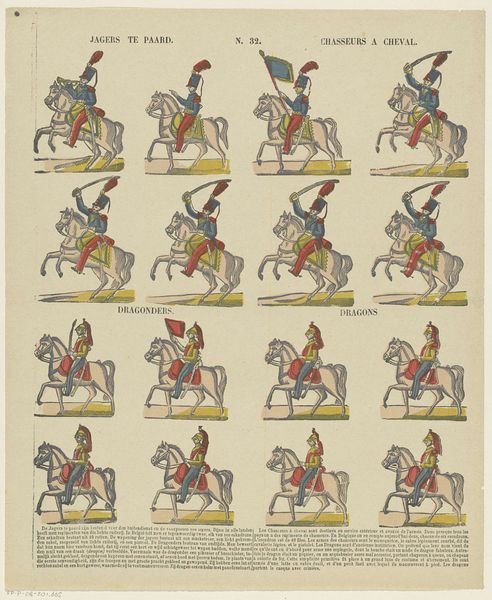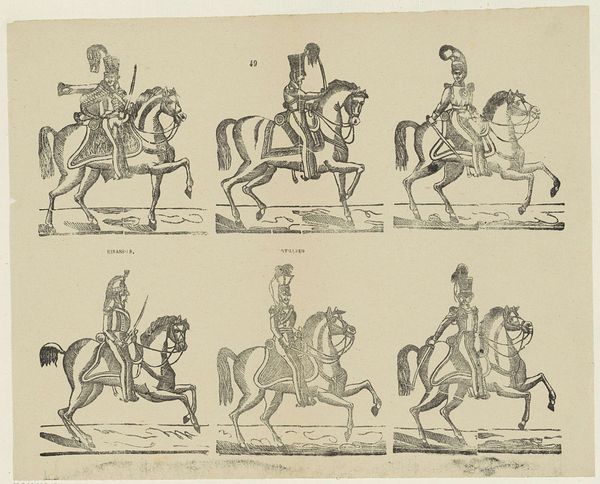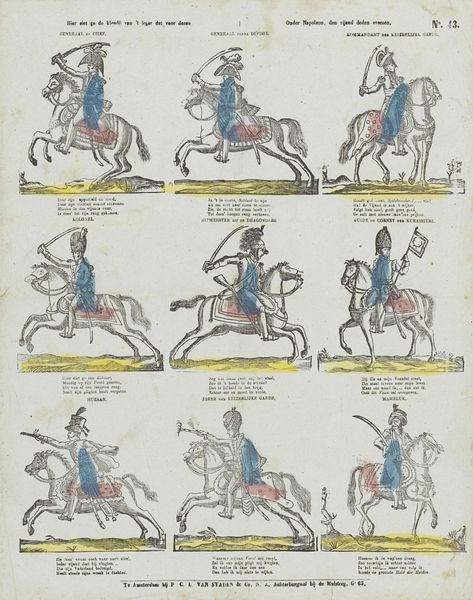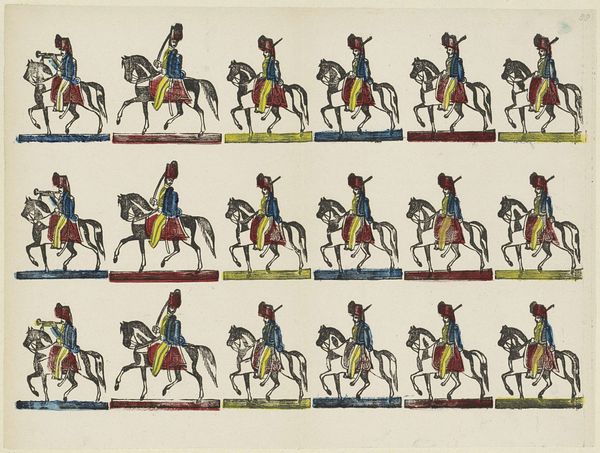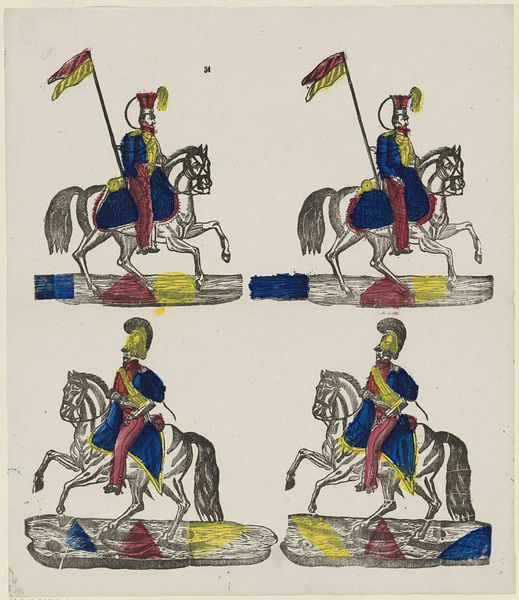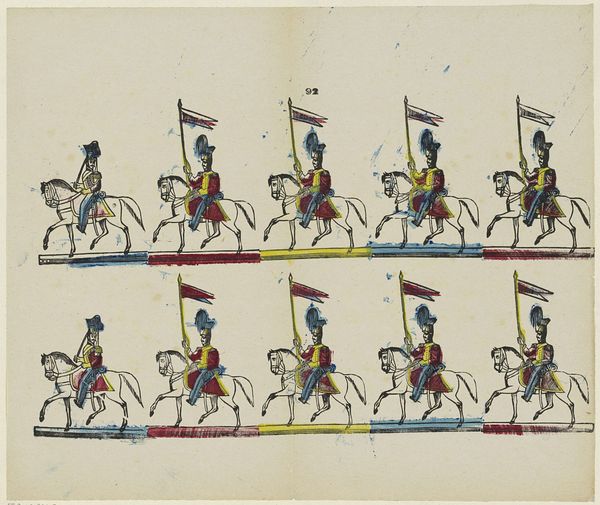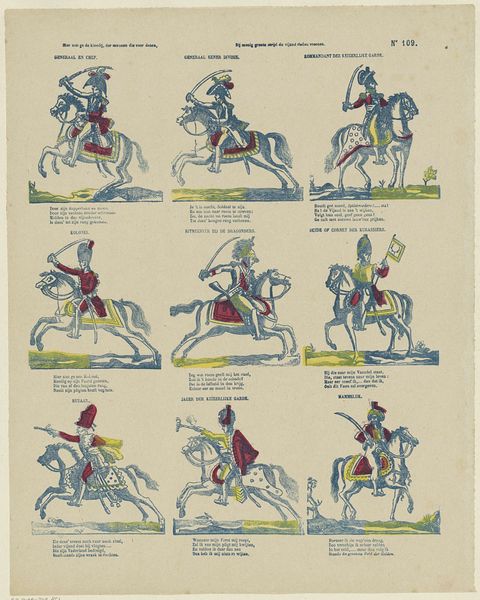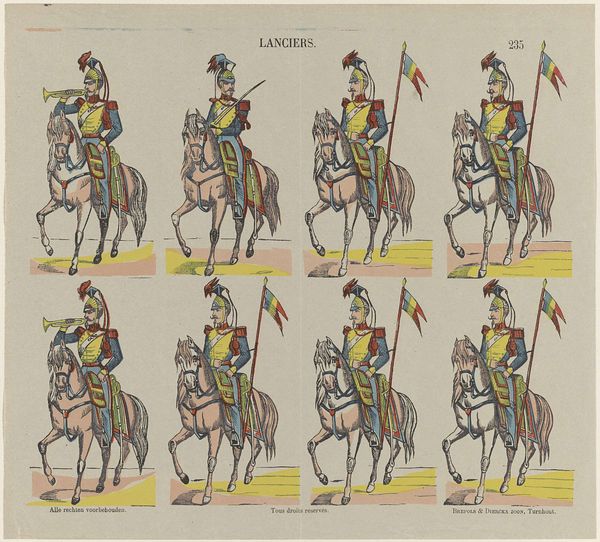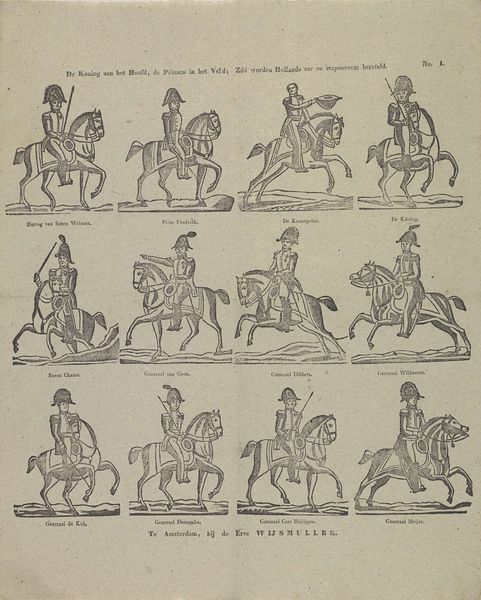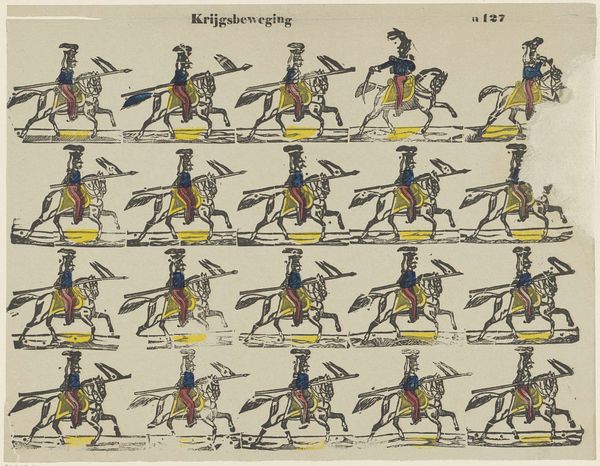
De koning aan het hoofd de prinsen in het veld; / Zoo worden Hollands eer en wapenroem hersteld 1848 - 1881
0:00
0:00
Dimensions: height 383 mm, width 312 mm
Copyright: Rijks Museum: Open Domain
Curator: At first glance, I'm struck by the sheer quantity of figures, all meticulously lined up as if on parade, but with a slightly naive and dreamlike quality. Editor: This lithograph, created by Lutkie & Cranenburg between 1848 and 1881, bears a rather long title: "De koning aan het hoofd de prinsen in het veld; / Zoo worden Hollands eer en wapenroem hersteld". It’s a print on paper, demonstrating characteristics of both romanticism and history painting, combined with a touch of genre painting. Curator: Interesting. The medium itself, lithography, allows for relatively easy reproduction. Makes you wonder about its intended audience and its availability, doesn’t it? Paper wasn't always cheap! Also the social implications regarding the making of art accessible to the population outside the elites Editor: Absolutely. Given its historical context, it likely served as a piece of propaganda, aiming to instill pride and confidence in the Dutch monarchy and military leadership, given the nationalistic sentiment the text suggests. The figures on horseback clearly depict the King and his princes as powerful figures, visually linking them to notions of strength and victory. Curator: It’s compelling how the artist utilizes basic shapes and simple colors – blue, yellow, red – almost mimicking children's building blocks. The repetitious design further flattens out our visual reception of the print making it seem as if these are characters on parade ready to be played with, ready to stage battle. It really drives home the element of how war is a performance. Editor: Yes, and consider how the institutional display of art reinforces specific power dynamics. A print like this, originally circulated possibly as a mass produced item, is now framed and presented within the gallery. That completely shifts our understanding, moving away from an object of perhaps fleeting daily relevance, to a valuable record of political and artistic intent. Curator: So, looking at it now, I find myself considering the layers of intention: the printer’s craft, the sociopolitical landscape, and how that intent gets re-interpreted when you present a printed item behind a glass pane. Editor: Precisely. It goes beyond simple imagery and brings forth discussions about how history, material, and ideology meet within the space of art.
Comments
No comments
Be the first to comment and join the conversation on the ultimate creative platform.
